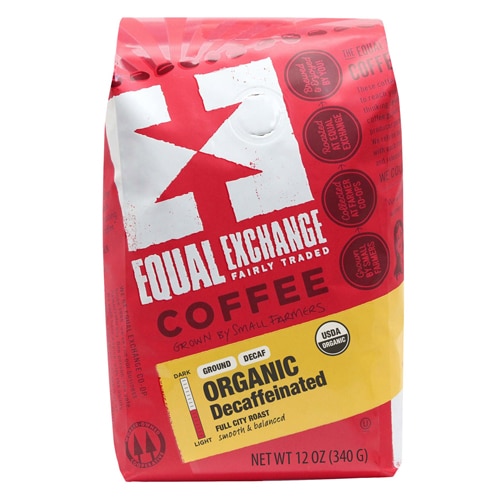You may think you’re doing everything right, filling your cart with leafy green vegetables, brightly hued fruits and lots of whole grains. Your body may be thanking you for fueling it so well, but your bank account might be suffering. (You know that “whole paycheck” joke.) The truth is, sometimes eating well can be expensive. It’s easy to blow your budget when shopping for healthy foods, especially when you’re not paying attention to what (and how much) is going into your cart. Two nutrition experts share the top spending mistakes people make when shopping for healthy foods in particular, and what to do instead.
Tips for Shopping on a Budget: 9 Mistakes to Avoid
1. You’re popping into the grocery store all the time.
How many times have you gone to the grocery store to grab one or two things, but ended up leaving with a whole shopping cart instead? Swinging by multiple times a week can actually lead to overspending in the long run, says Josh Axe, DNM, CNS, DC, founder of Ancient Nutrition and DrAxe.com. Instead, plan ahead and make a list of what need (that you’re going to stick to), and limit yourself to one or two shopping trips per week.
2. You’re buying more than you need.
Filling your cart up with fresh fruits and veggies may seem healthy, but if you’re buying more than you need, it can lead to food waste and end up costing you more money. Aim to purchase only the amount of produce that you know you’ll be able to finish, says Axe. “You can always keep some staples on hand like canned goods, frozen veggies and dried legumes to hold you over if you run out before the week is over,” he adds.
3. You’re wasting food.
Just like buying more than you need can take a toll on your budget, throwing away food scraps instead of repurposing them can also cost you extra cash, says Axe. Get more bang for your buck by using bones from meat or veggie scraps to make stock, adding wilted vegetables to soups or smoothies, making stale bread into breadcrumbs or croutons, or steeping apple peels in hot water to make tea.
4. You’re shopping in the wrong sections.
While studies show there are some benefits to buying organic produce, it does come at a price: A 2015 analysis by Consumer Reports showed organic food products cost an average of 47 percent more than conventional food products. Being picky about which organic produce you purchase can help minimize your grocery bill without giving up what’s important to you. Axe recommends purchasing organic fruits and vegetables listed on the Environmental Working Group’s annual “Dirty Dozen” list to reduce your exposure to pesticides, and saving by choosing non-organic produce from EWG’s “Clean Fifteen” list. This includes items like avocados, sweet corn, pineapples, onions and asparagus.
5. You’re not doing your math according to your schedule and recipes.
Many people buy the same quantities of food weekly and don't budget in for opportunities within that week where they won't be eating at home (say, an office happy hour or dinner out with friends), or they overspend for a single recipe, says Monica Auslander Moreno, MS, RD, LDN, a nutrition consultant for RSP Nutrition. For the latter, consider what easy substitutions you can make to save. For example, “You don't need to buy a $14 dollar bag of almond flour for a recipe that calls for 2 tablespoons—use rolled oats [instead],” says Moreno.
6. You’re buying convenience meals.
Many processed products and convenience meals are labeled as “healthy” or “low-calorie,” but not only are these products not as good for you as you might think (they’re often laden with added sodium, preservatives and artificial sweeteners), they also can come with a pretty high price tag. Getting in the kitchen and preparing your own meals from fresh ingredients is a great way to take control of what you’re putting on your plate and help you stretch your budget in the process, says Axe.
7. You’re forgetting about the freezer section.
Fresh fruits and vegetables are great, but they can often be more expensive and lower in quality when out of season, says Axe. Instead, purchase your favorite produce fresh when it’s in season, and opt for frozen varieties during the rest of the year. Frozen fruits and vegetables offer the same about the same set of nutrients as fresh, help you save money and also last longer in the freezer.
8. You’re meal prepping with the wrong containers.
Meal prepping is a great tool that can help you save time, money and energy during the week, but you might be sabotaging your efforts if you’re not choosing the right size and quality of meal prep containers, says Axe. You should be using high-quality, glass containers that help preserve your food to last for the week, preventing food waste; and that are suitable to your portion sizes, preventing you from buying (and eating) too large of servings.
9. You’re paying a premium for “fancy flavors.”
While those holiday treats are enticing, they’re an enemy to your wallet. “Tis the season for flavored everything—especially yogurts, milks and kefir,” says Moreno. “It's easy to spend $4 per serving on a fall fig yogurt, but you could buy a huge tub of plain yogurt for about the same price and add your own fresh figs instead, which would maximize nutrition and flavor as well.




